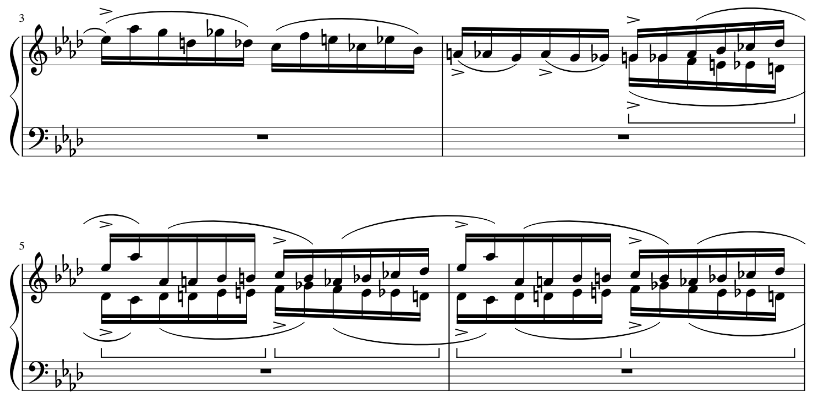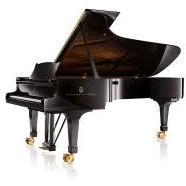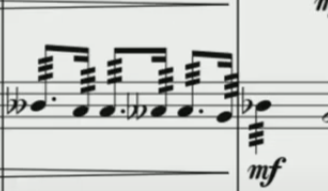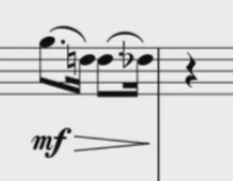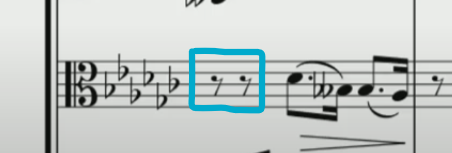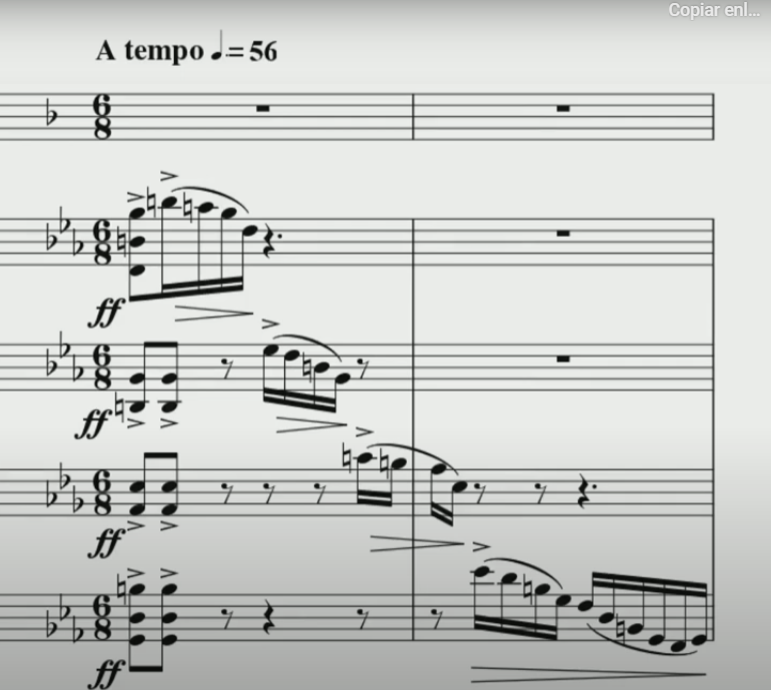Leaderboard
Popular Content
Showing content with the highest reputation on 12/07/2022 in all areas
-
This work was written for a call for works for violin and cello duo. An episode is a form that I created a few years ago. The concept behind the form stems from my love of contrapuntal textures. For this form, which I've explored more within my piano writing, the concept is the weaving of contrapuntal textures and more homophonic explorations of the material -similar to the estampie model of the renaissance. This would be the first episode that I've composed outside of my piano works -so, to me, this work is an excellent embarking of the form to other genres! Anyways, I'll be revising this piece based off the performance -should it manifest! Hope you enjoy.2 points
-
This is my "Soliloquy for Clarinet No. 21". Here is the link to my previous soliloquy for clarinet, composed in March 2020: https://www.youngcomposers.com/t39457/soliloquy-for-clarinet-no-20/1 point
-
As a violinist, I've always felt today's musical landscape is missing something with the general absence of any modern violinist-composers along the lines of Paganini, Wieniawski, Sarasate, and so on to contribute new and exciting pieces to the repertoire. But since I'm both a violinist and a composer, I figure I might as well throw my hat in the ring and try to fix that. I've written four pieces by now, though I'd only ever performed two -- until recently, when I got to premiere the third. I composed this piece back in 2020, shortly before the entire world shut down. But recently I finally found a good opportunity to perform it, so I gave the "world premiere" on November 9, 2022. Unfortunately it was not recorded except on a phone at the back of the hall, and the massive echo made it sound pretty muddy. So I got a recording session in today in order to get higher-quality audio. Here's the end result: https://www.youtube.com/watch?v=WghXNdOc-VY The indication "harm." in the part is not me being too lazy to make diamond noteheads -- it is the notation used by violinist Roman Kim (one of my biggest inspirations and another torch-bearer of modern violin composition) to indicate the use of the forced harmonics technique he invented. It sounds one octave higher than written, is fingered exactly as written, and always lasts until the following "ord." mark. They appear at timestamps 2:15 and 3:56. While exceptionally challenging to master, they unlock some sounds that would otherwise be impossible to produce, so I think it would be interesting if the technique could become more widely learnt and incorporated into more modern violin writing.1 point
-
Of course I don't mind, it's public after all! The flute-like sound I imagine you are referring to is almost certainly from the forced harmonics. While regular artificial harmonics would sound relatively similar (hence their alternate name, "flageolet tones"), I find that the forced harmonics are a bit softer and less piercing, and they also allow me to access lower pitches and enjoy more agility in passagework. The technique is still incredibly rare; myself and Roman Kim (its inventor in the first place) are probably the only two composers routinely using it, though I would be delighted to hear of others. Very few violinists are capable of executing it successfully.1 point
-
Simple piece, very "readable" for which I thank you since it's already 8 am and I should be sleeping. Apart from that you provide the score, which I always value :). I ended up here and it seems like this piece likes what it is and doesn't intend to go neither further nor back. Good job? I also believe it fits with a clarinet but I'm no clarinettist so I can be as wrong as the rest of the text written here. Thank you for sharing your 21st soliloquy. Kind regards, Daniel–Ømicrón.1 point
-
My deepest gratitude to your in-depth analysis and enormous effort! Without that this post will keep sinking at the bottom!🤣😜 Kind Regards!! Henry1 point
-
1 point
-
The beginning doesn't convince me too much, I guess it's just not my style, though the section starting at M23 does sound good to my ears! After the 4-5th time listened the beginning starts to sound familiar and I eventually liked it hehe. Your handling of dynamics and contrasts is very nice, articulations seem precise (I'm not a violinist nor a cellist so I cannot tell for sure but they look very accurate to me), there's a strong feeling of structure due to (I suppose) some repeated motives and phrases here and there... Ah, and I truly loved the pizz. Overall a nice piece that sounded better the more I listened to it, which sometimes is not the case. Thank you for sharing! Kind regards, Daniel–Ømicrón.1 point
-
Wait, random why? In other words, what's more ambiguous and random, a pause of 2 beats that the composer decided to put there in order to precisely indicate to pause for 2 beats or a fermata which each set of interpreters would perform at will? Probably none of this is random if one knows what he wants. This is probably one of the reasons no one did ask about that: they hadn't thought that was a mistake. I wouldn't dare to say so either, though judging by some other scoring mistakes it could be. Oh that's a good question, though still nobody likely paid attention to it (and since I'm not a clarinettist I hadn't even found it strange) as it appears only briefly in the first movement. The other three, as far as I remember, have not C clef on the clarinet. Guess the scoring also speaks of the difference between Henry at the time of composing that first movement and the fourth one. Kind regards, Daniel–Ømicrón1 point
-
Scoring and writing idiomatically for the instrument that come with experience and knowledge of the instruments. I'm pouring over the score -which might take me a day day or so given my schedule (and that its a massive score). So, I'll post a more thoughtful review then.1 point
-
1 point
-
Thank you for your review regarding the scoring! Yeah I could have eradicated that random 2/4 measure, had the program wise enough to prolong the time I intended! Yes that's right. I was originally afraid that there will be too many ledger lines, but it seems better to use treble clef throughout. I will change that for a final scoring. Thank you!1 point
-
All these insightful reviews and not ONE Person asked two of the obvious questions: what is with the random 2/4 measure at the beginning? This pause could have just been made with a fermata over the last rest in the previous bar. Also.... why do you have the clarinetist using an alto (c) clef? This isn't idiomatic -at least from my experience.1 point
-
Just a few thoughts: 1. In the section shared by Henry above, perhaps reconsider your slur markings to better indicate the harmonic pedaling that you are wanting. Unless the slurs are indicative of compositional organization (which I suspect they serve a dualistic role for idea organization and musicality), then its best to make it more clear and concise with these. 2, Just a caveat, several areas of planing could do better with contrary motion between the bass line and upper parts -which wouldn't necessarily mess with the overall sound of these passages. For instance, bar 11 (which is the same material as bar 9) would make more sense to have the material in the right hand to go from the lower register back up -and one that would make this passage seem less of a repeated passage. Measure 13 is another area I'd also look at. The last beat in the bar (with the ascending eighths and suspended quarters) might go well with more contrary motion -though this would be minor as the ascending section is grounded with the suspension. 3, Measure 25 looks like a hot mess with the slur markings. I'm suspecting this is due to the notation program used to compose this. I'd also look at perhaps changing the homogeneity of the accompaniment pattern. Perhaps if you thicken up the left hand -which would add sonic mass to that pattern and free up the right hand to bring some weight to the descending chromatic motif. Finally, how to add a slow section. I'm very fond of chromatic music like this -though usually in a much more dissonant context. One thing I found works is to apply a ritardando to material. You can achieve this by taking the chief motivic unit (or cell) and applying diminution to it. This is where you extend the note values (eighth replaces 16th, quarter replaces 8th, etc) or just simply applying a ritardando to the passage and changing the tempo marking when you arrive at where you want the material to begin. This works well (particularly the diminution) and allows you better cohesiveness with your material.1 point
-
As a pianist I will regard bar 19-24 and bar 32-42 really difficult to play! It's so difficult to play that chords smoothly. And the whole piece is really monstrous to play! The pedal marking in bar 4-6 seems strange for me since it's put under the right hand. I am used to having the pedal underneath the left hand! But apart from that this piece is so nice with its chromaticism! Overall cool and I am unable to stop it once it's played! I love the chromatic and sometimes bitonal nature of this work, so effective in the sound! If that can be played, it will be an amazing encore piece for every concert! So exciting and a technically showoff piece for audience to enjoy!!1 point
-
Yes - the rests in the left hand at the end I think, could have been eliminated/merged into a whole measure rest. But the rests in the right hand are stuck there, because I used voice 2 for the long held Eb so I can't delete the rests which are in voice 1 because that's the primary (and thus necessary) voice. I would have had to have the chord played by voice 2 and then the held Eb in voice 1 and that would have created even more notation difficulties. (unless I used voice 3 for the chord and voice 1 for the held Eb maybe?) About the pedaling - there are definite places that I want a dry sound but others that I felt could easily be pedaled. It's not my intention to have every harmony underneath a pedal mark to be perfectly individual and clear so the smearing of the sound effect is satisfactory to me in those places. Thanks for your (at least cursory) review!1 point
-
Yes, it does tell a story ... I actually composed a slide show - with a 1940's theme NYC to go along with the music. Glad you enjoyed it. Mark1 point
-
@jawoodruff - I was thinking this would be entirely non-competitive, just something for members to work towards, but thank you for the offer. A review of any entries would of course be much appreciated. Wonderful to have you back!1 point
-
It sounds to me like an old midi that was meant to be imported into a RPG maker RPG game (video game music). It has that moody notey-ness to it that I associate with video game music. Thanks for sharing.1 point
-
So let's begin. I don't know how many hours this will take but I definitely felt the need to do this. First of all, I do think you should really consider uploading more of your works here. They are already in YouTube, so they're already public, and I believe some people will definitely like those. I have listened to a few before fully listening this quintet and I can say that despite your totally understandable opinion I must insist, they are worth of being uploaded here! • First movement: God, 6 years of work?! It's a pity we cannot listen to this with real instruments. I imagine it would cost a decent amount of money to hire professionals and a lot of effort to make it in a DAW, but perhaps better soundfonts would have helped. Anyway, after a short "presentation" things start to move. Double-bass: It has a lot of work between M[60-70] and its solo at M100 would surely sound more convincing (as everything, but this in particular) with more real sounds. Nice, the whole section around min 4-5 is very enjoyable for me. It gives a brief mood change. God damn those tremolos would sound 10000 times better with the deserved sound! Why? (why not compressing the silences? Just curious, I would do it so I ask) The passage starting at 172 and the likes are so nonchalant, they really give a clever contrast for those sections with string tremolos and scales and give the fair amount of importance clarinet deserves in my opinion. The climax you reach at M213 really gives me the feeling of despair. Probably everything you've built from around min 4 to this point is my favourite part in this movement.These figures would be a nightmare to play on the piano (most likely) but strings have it easier (...right???). I know this is being too specific but since it's obvious how much you value (righteously) your work I'll be specific and tell you, beware with music notation software alignment, they do things like these: which hinder readability a bit (see how the flat collides with the dot) and needs manual adjustment. This is an issue that Music Jotter won't have isn't that right @chopin? 😜 Well now that I'm done with this totally planned spam let's continue. Again I would have compressed these silences: (M220). Noticed a bunch more of these before 220 on a second listen. That tremolo cresc. just after those M22X is really fitting despite the sound isn't the desired one. Here I get what you are trying to do but I am not totally sure whether you may get what you wanted. Instruments may sound connected in the digital interpretation but this may not happen in real life. I would have extended the last note a bit... But anyway, you clearly indicate legato. I notice many modulations and ideas coming in and out. Though some are based on the main motive, one could get lost on a first listening. Not that this is necessarily bad, but I feel that the section that begins with the above measures could work alone as a movement itself. However, since this is a quite long first movement I guess this works as the "B" or "development" and additionally it sounds beautiful, comes back to the main motive or variations of it, I really like the pizz. passages and some beautiful melodies that make me getting more immersed in this first movement. The phrase starting at M400 is EPIC. And from near 400 on I suppose we come back and go to the recapitulation of this movement. It's really grandiose up to M500 where I feel a bit lost in the 20 next measures. From ~M530 and so on there's a series of "false finals" that exhaust the motive. In my opinion, from all those "finals" you could have chosen, the one you decided didn't convince me too much but I think this is influenced by the overall sound of the piece. Probably it would be far more convincing, again, with better soundfonts and surely if played by real interpreters. In summary, a quite long but well developed first movement driven mainly with a single motive and variations of it and containing really epic sections, contrasts, lots of modulations and key changes and last but not the least important recognizable enough structure. • Second movement: Making use of the chapter function in YouTube will be really useful in this case. The beginning is structurally a repetition of the 1st movement. A clear and solid presentation of the motive for the listener, will this one drive the entire movement like it happened with the first? I shall see in 9 mins (well actually more, it's 19:22 and I started writing this at around 18:30 lol, time passes quickly). Finally the clarinet comes to the party and strikes with a difficult variation with the motive, very nice development, I'd say that there's some pro... Oh god the pizz. section sounds incredible! There's a learning curve here I believe. I still see these silence sets that don't make sense to me. Despite being also in a ternary time signature, the change of tempo speed & form makes this still fresh and enjoyable. I am not even halfway through the piece so perhaps I'm speaking too soon. But I'm not getting bored at all for now. What you did at M284 was unexpected. I'm not sure of it but my ears aren't really displeased. The second voice that arises from the strings complement the clarinet neatly (starting near M425). This, along the pizz. parts are my favourite parts of this movement. The slow build-up that reaches the beginning of the movement would enter in that list too. Between ~M[650-700] I feel a weaker melodic line on the clarinet which makes me wonder where this is going. The changes in dynamics still serve as a guide, but the strings are "advancing and going back", it's like they cannot really go anywhere without the clarinet and the clarinet is not present enough because it's also doing the same "advance and go back" over and over. This leads to a kind of chaos that isn't solved and after that we get that final pizz. part which doesn't conclude anything to me, thematically speaking. Still I don't find this misleading, we are about to enter in the second part of this great quintet. In summary a powerful scherzo, perhaps a little repetitive in some parts and with a confusing final, but with a really great beginning, a solid motive and a very successful feeling of anxiety in some sections like min 27-28. • Third movement: Well, after a pause to have dinner I have re-listened to the first two movements and added comments and criticism here and there, let's continue: From M1 to M12 you completely got me, but that abrupt pause took me out a little. Nice counterpoint that keeps incorporating the voices up to they all reunite in a well notated and good-sounding web of voices where the sustained prominence of one is rather uncommon. Well constructed fugues always make me lose my chronoception. Whoa, now that I reached the adagio mesto it gets even better, everything from (and specially) the dynamics to the disposition of voices and the beautiful mixing of them reaches new heights compared with everything else in the composition. I am not going to stop the track this time to analyse anything first and just re-listen, I cannot, these kind of pieces always are satisfying to listen to the point I cannot see where is the right spot to pause them and comment, so I won't do it. I read some legatos and in the clarinet (M161) and I wonder why you want them to stop every 3-4 notes instead of lasting up to the end of the phrase. The clarinet solo convinces me when imagined in real life, but the transition to the next section not so much. I'd say this movement ending is the best one up to now (to my ears). Alone, a great work. Along with the other two movements, an inspiring third movement that acts as the great contrast (in tempo form and speed) with the other two and precedes the final movement of this surprising work. Surprising not because it's particularly revolutionary, but because this is supposed to be one of your first works, (isn't it?) and yet it's incredibly solid and it gets better with every movement. Even if it took that much to you, I am sure you'll make many more, but this isn't the proper time τ to digress. It is time to enter into the grand finale of this quintet and see if it's up for the high standards left by the prior movement. • Fourth movement: OK. I'd not exaggerate if I say that the first few seconds did tell me more than a lot of sections of this piece. It's definitely keeping up to the previously established standards and honestly it surpasses my own expectations. All the tricks you've been using on the 3 prior movements that didn't convince me too much here work perfectly up to now. The abrupt pauses no longer sound neither a little bit unfitting, voices are much more recognizable and the clarinet and the strings mix as good as in the 3rd movement but with a more varied thematic. This movement is something else, it is completely a "level up" compared with the first. The use of dynamics is refined, the question-answer structure of many sections here demonstrates in my opinion the peak of the learning curve that can be seen in this composition which would just deserve my 5 stars only by this work alone. Really everything feels much more "clever" here. That can be perfectly seen around M389 of this movement. You could have ended there, but why? Nah, you kept on and produced epic sections like the one with sfs near M432. I would really pay to see this movement in a concert and I'm sure I would not be able to look away. I wonder if what this movement tells and the fresh and powerful strength with which it speaks is also due to the preceding movements. In any case, God, I am already past min 58 and I don't see a clear trace of a final. I don't know Beethoven's string quartets enough to give an opinion about your statements. Wherever Beethoven is, I'm sure it's alright, but I have even heard a past motive from another movement just before reaching the first hour. Lol there's even a cadenza at ~min 61 that sounds kinda jazzy in the end (perhaps you're interested @Tom Dahlenburg lol). I am not really sure of the effectiveness of pp vs. ppp but the ending is perfect and unexpected (in Eb). I promised myself that I had to check this piece fully before the end of this weekend, but lol, it's 23:59 so I'm afraid this reply will be published on Monday. No worries though, the whole piece was enjoyable both by parts and as a whole. My favourite movement was, by far, the fourth, which I listened to again before continuing with what I'm writing now. It's long, yeah, but I have listened to 10-15 min pieces (not necessarily here) that didn't say me anything and felt like much more time. Hats off, and my sincere congratulations for achieving this and persevering for years till this final draft. Again, it has been a pleasure to listen to this commendable, exciting, unsettling, peaceful, full of despair and hope work, the C minor clarinet quintet, movement by movement and as a whole, as well as reviewing it here. I know I've been pedantic specially with these last words, but really I'm still under the magic of the last movement and I just want to add: excellent, keep composing, keep uploading your works both on here and on YouTube! Kind regards and thank you for sharing. Daniel–Ømicrón.1 point




.thumb.png.8b5b433a341551e913a34392660bc95b.png)


